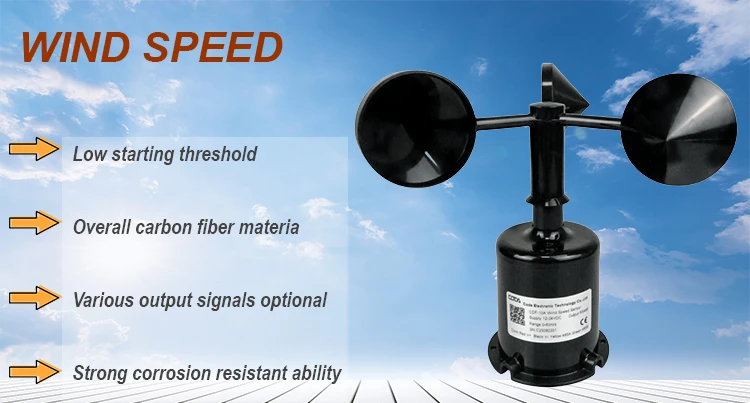
# Anemometer: Instrument to Measure Wind Speed
## What is an Anemometer?
An anemometer is a meteorological instrument specifically designed to measure wind speed. This essential tool plays a crucial role in weather forecasting, aviation, marine operations, and various scientific research applications. The word “anemometer” comes from the Greek word “anemos,” meaning wind, and “metron,” meaning measure.
## Types of Anemometers
### 1. Cup Anemometers
The most common type features three or four hemispherical cups mounted on horizontal arms that rotate with the wind. The rotation speed is proportional to wind velocity.
### 2. Vane Anemometers
These combine a propeller and a tail to measure both wind speed and direction simultaneously. They’re often used in weather stations.
### 3. Hot-Wire Anemometers
Using electrically heated wires, these measure wind speed by detecting how quickly the wind cools the wire. They’re highly sensitive for low wind speeds.
### 4. Ultrasonic Anemometers
These advanced models use ultrasonic sound waves to measure wind speed and direction without moving parts, making them more durable in harsh conditions.
## How Anemometers Work
The basic principle involves converting wind’s kinetic energy into measurable mechanical or electrical signals. In cup anemometers, for example:
– Wind pushes the cups, causing rotation
– The rotation speed increases with wind velocity
– A sensor counts rotations per time unit
– The count is converted to wind speed (typically in meters per second, miles per hour, or knots)
## Applications of Anemometers
Anemometers serve numerous important functions:
– Weather forecasting and monitoring
– Aviation for airport wind measurements
– Wind energy assessment for turbine placement
– Building ventilation system design
– Marine navigation and safety
– Industrial process control
– Environmental research
## Choosing the Right Anemometer
When selecting an anemometer, consider:
– Measurement range (minimum and maximum wind speeds)
– Accuracy requirements
– Environmental conditions (temperature, humidity, etc.)
– Power requirements
– Data recording capabilities
– Portability needs
– Budget constraints
Modern anemometers often include digital displays, data logging, and wireless connectivity for remote monitoring. Some advanced models can measure additional parameters like temperature, humidity, and wind chill.
## Maintenance and Calibration
To ensure accurate measurements:
– Regularly clean the instrument
– Check for physical damage
– Verify calibration against known standards
– Protect from extreme weather when not in use
– Follow manufacturer’s maintenance guidelines
Proper care extends the anemometer’s lifespan and maintains measurement reliability, which is critical for safety-sensitive applications like aviation and severe weather monitoring.
Keyword: instrument measure wind speed